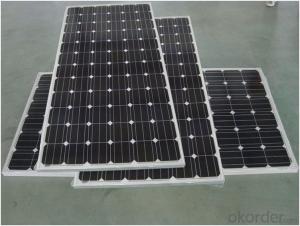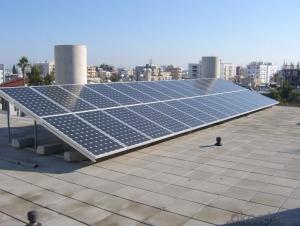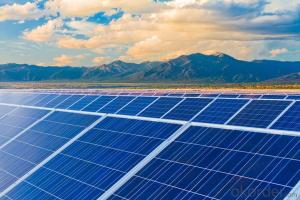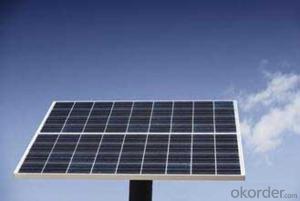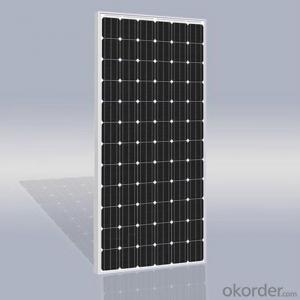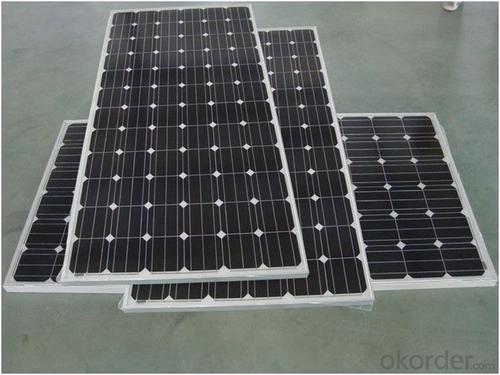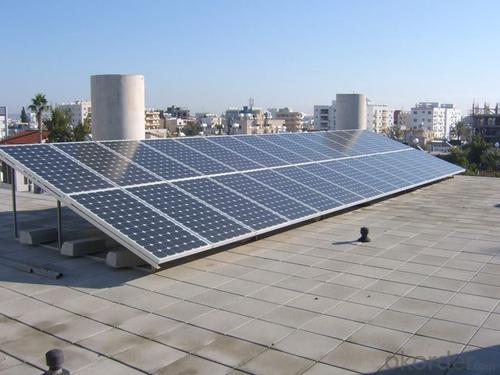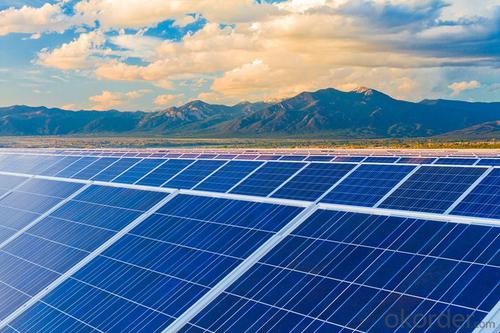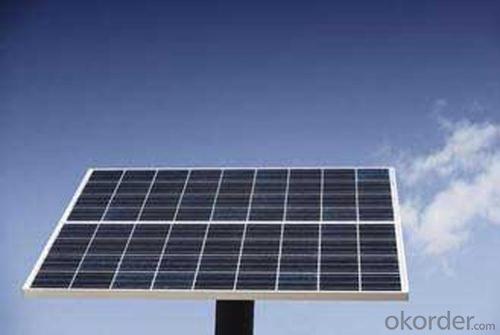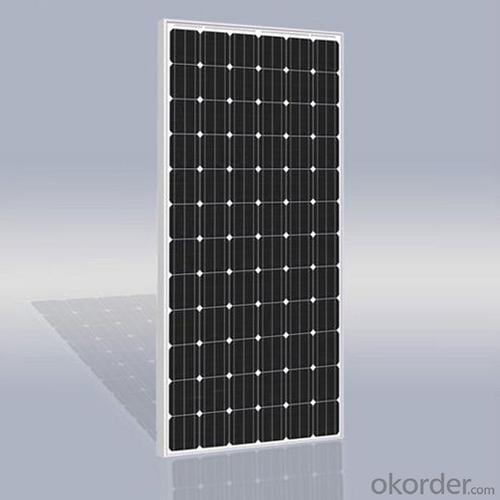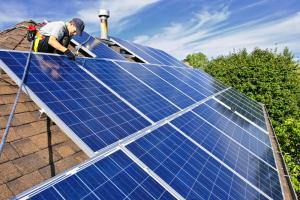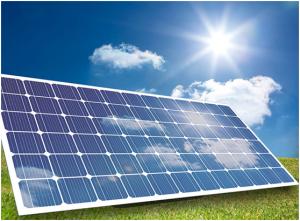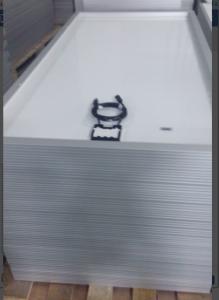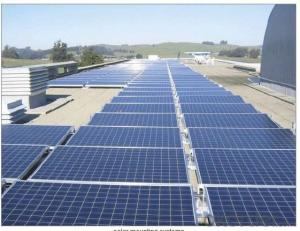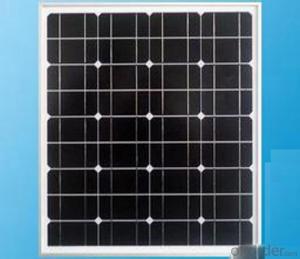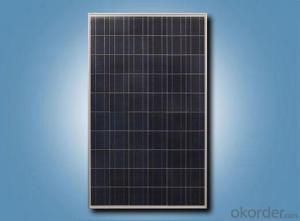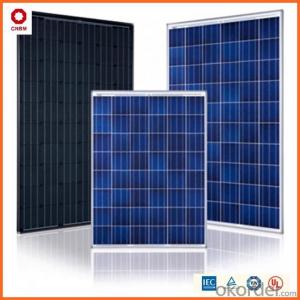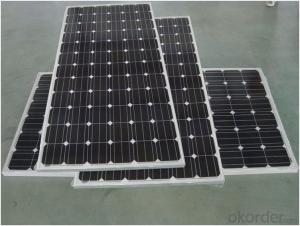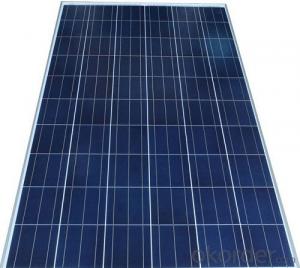36V Monocrystalline Copper Indium Gallium Selenide (CIGS) Solar Panel 245W with TUV Certificate
- Loading Port:
- China main port
- Payment Terms:
- TT OR LC
- Min Order Qty:
- 500 watt
- Supply Capability:
- 2000000 watt/month
OKorder Service Pledge
OKorder Financial Service
You Might Also Like
36V Mono Solar Panel 245W with TUV Certificate
Features for monocrystalline solar panel :
1. Max Power Poly Solar Panel 310W and Mono Solar Panel 335W ;
2. Type of Connector : Compatiable Type MC4 ;
3. No. of Draining Holes in Frame : 16
4. High Transmission ,Low Iron and 3.2mm Tempered Glass ;
5. EVA Encapsuiation ;
6. White Tedlar Back side ;
7. IP65 Rated Junction Box ;
8.Clear Anodized Aluminum Alloy Type 6063T5 Frame ;
monocrystalline solar panel picture :
Quality and Safety for monocrystalline solar panel :
1. ndustry leading power output warranty, 25 year 80%, 10 year 90% power warranty and 10 year product warranty
2. ISO9001:2008 (Quality Management system) certified factory
3.Product Quality warranty & products Liability Insurance to guarantee and user' benefits
Picture details for monocrystalline solar panel :
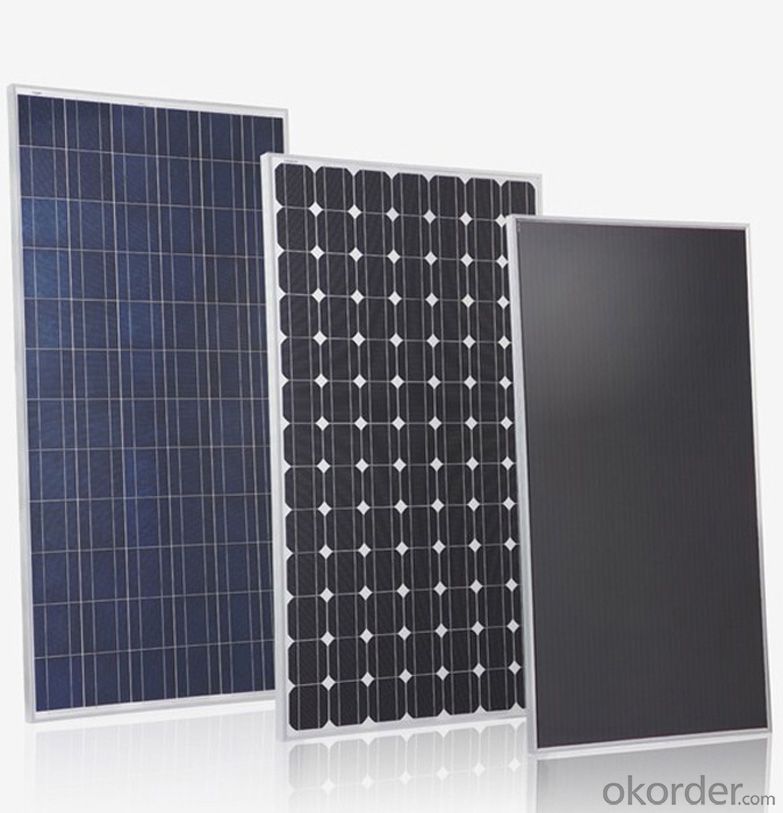
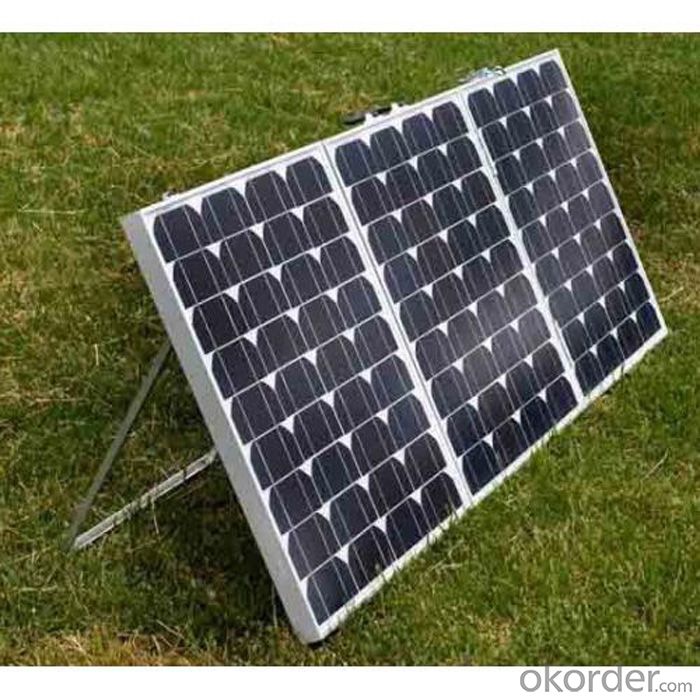
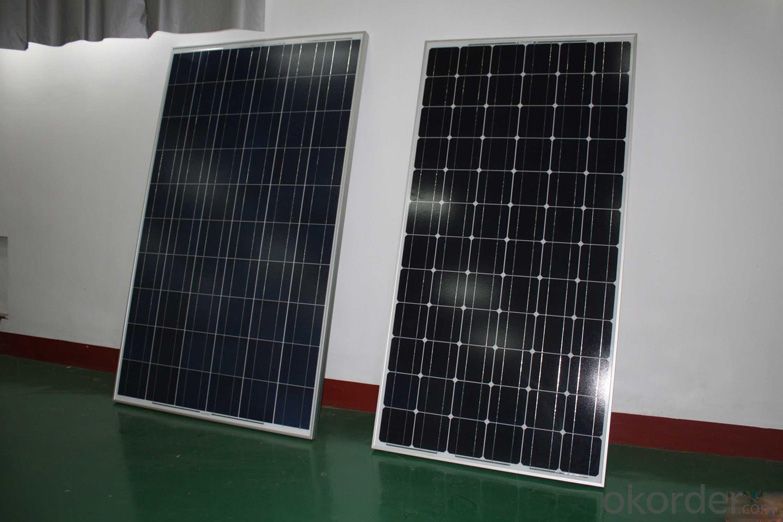
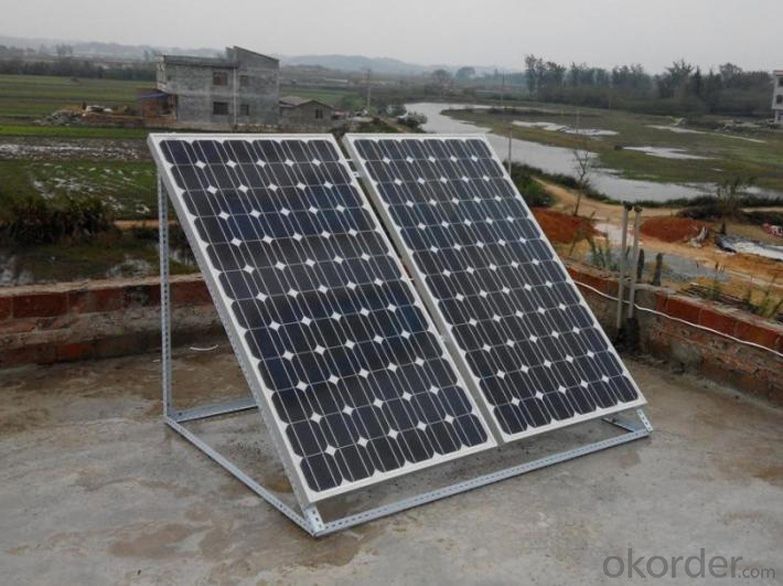
Packaging & Shipping
Packageing Configuration : 26pcs / Box
Quantity Pallet : 1 box / Pallet
Loading Capacity : 812pcs/ 40'HQ
FAQ:
①what price for each watt?
it depends on the quantity, delivery date and payment terms,
②what is your size for each module? can you tell me the parameter of your module?
we have different series of panels in different output, both c-si and a-si. please take the specification sheet for your reference.
③Can you provide the peripheral products of the solar panels, such as the battery, controller, and inverter? If so, can you tell me how do they match each other?
Yes, we can, we have two companies for solar region, one is CNBM International, the other is CNBM engineering Co.
We can provide you not only the solar module but also Solar Cells, the off grid solar system, we can also provide you service with on grid plant.
④What is your warranty system?
Our product performance guarantees for 25 years
• 12 years guarantee for workmanship
• Timeliness of delivery
• Quality Products certified (TÜV, UL, CE, ISO)
⑥ Can you do OEM for us?
Yes, we can.
- Q: Can solar panels be used to power a public transportation system?
- Yes, solar panels can be used to power a public transportation system. By installing solar panels on the rooftops of public transportation vehicles or on charging stations at transit hubs, the energy generated from the sun can be harnessed to provide power for electric buses, trams, or trains. This reduces reliance on traditional energy sources and helps to make public transportation more sustainable and environmentally friendly.
- Q: Can solar panels be installed on schools or educational campuses?
- Yes, solar panels can be installed on schools or educational campuses. Installing solar panels on educational institutions not only helps to reduce their carbon footprint but also serves as a practical learning tool for students, showcasing the benefits of renewable energy. Additionally, solar panels can provide cost savings on electricity bills, allowing schools to allocate more resources towards education.
- Q: My home uses an average of 2400 kW per month (28,800 per year.) How much can I expect it to cost to install solar panels of this amount? (It is not my intention to go off of the electric company's grid. I would like to generate what I can / possibly sell back extra power)What quot;hiddencosts are there? What is the average life of them?What is the quot;best(cost effective and green) solution / approach?(BTW.... I am in southern LA if that makes a difference)Best answer will go to clear answer WITH links/resources to back it up!)THANKS A MILLION!!! I hope you have a safe and happy holiday season!!!
- Power inverter to change 2VDC panel power to 220VAC House power. (~$600) You are also going to need various switches and a meter to keep track of how much you are sending back to your power company. Final answer... Expect to pay ~$7,000.00 with installation by a qualified electritan.
- Q: i attached a usb charger to my solar panel(it has an output of about .2 volts) but i read on my multimeter its only using about 8 volts however on the conventional wall charger that i use to charge it has an output of about 5. volts.... i believe that my mp3 player is not charging it does not display the charging icon when it is on or off ....is this becuase the output is higher ? do i need to install a volt dropping diode to prevent it from putting to much energy at once? (my mp3 charges fine on the wall charger but does not seem to respond to the solar panel so it the circuits are fine....)
- Have okorder . This could undoubtedly assist person!
- Q: I need to build a battery array to use with my solar panels I just bought. I want to be able to store enough energy to be draw from it at night, possibly around the clock. Is there a down side to using the deep cycle battery I bought from autozone and 6 or 7 more just like it, or do I need to get some other battery?
- There are batteries particularly made for solar, such as the Trojan T05-RE . I think the RE stands for renewable energy. A deep cycle battery should work all right, although not quite as well. What you want to do is try out your setup first, with just one battery, and the panels provided. If this is one of those 45 watt kits, you may be surprised at how little energy you actually get from the panels. Increasing the number of batteries won't help, either - that's like getting a larger water tank, when you only have a trickle to fill it. If your goal is really to save money, the most cost-effective solar is the grid-tied type, with no batteries at all. That's what we have, and I've never regretted it.
- Q: Any recommendations for companies? Any things to look out for?
- Yes, solar panels are a great way to save on electricity costs for your home. 4 things I can tell you to look out for are: Make sure you can fit enough solar panels on your house to make a decent saving. If you don't have the roof space then you can't put up enough panels and you might as well not bother. For a medium sized home, I would say that you should go no smaller than 2.2kW in solar panels. If you can fit more then go for it. Make sure that the inverter that is used is big enough. It has to deal with the watts from the solar panels back to the power board to convert it as useable energy. If you have a rebate system where you live then make sure you use it. Where I am we have carbon credits that the government will give you that you use to offset the cost of purchasing solar. Don't fall for gimmicks where a company will promise you that you won't pay electricity every again. In order for that to happen you need to be putting more electricity back in the grid as you are currently using so you either need a huge amount of solar panels or you really need to cut back on what you are currently using.
- Q: Can solar panels be installed on metal roofs?
- Yes, solar panels can be installed on metal roofs. In fact, metal roofs are often a great choice for solar panel installations due to their durability and long lifespan. Additionally, the smooth surface of metal roofs makes it easier to secure and position the panels, maximizing sunlight exposure and energy generation.
- Q: How do solar panels impact the local economy?
- Solar panels can have a positive impact on the local economy in several ways. Firstly, the installation and maintenance of solar panels create job opportunities, stimulating employment and income generation within the community. Additionally, the use of solar energy reduces reliance on imported fossil fuels, contributing to energy independence and reducing energy costs for both households and businesses. This can lead to increased disposable income, which can be reinvested in the local economy, supporting local businesses and promoting economic growth. Moreover, solar panels attract investment and contribute to the development of a clean energy sector, positioning the community as a hub for renewable energy innovations and attracting more businesses and investments in the long run.
- Q: I need to write a pressuasive essay on why we should use solar panels more than we do. and convince people that their good and stuff.. if u guys could give me some good key reasons why..that would be great.
- Right now, the U.S. government and some state governments (like California) are offering subsidies on solar panels for businesses and houses. With these subsidies, anyone infesting in solar power today will have their investment returned in less than 0 years. This means that with these subsidies, solar panels are basically paying for themselves; they're free. In addition, excess power generated on solar panels can be added to the local power grid and, if you're lucky and can set it up with your local power distributor, the power company will pay you for the power you generate. This are just financial reasons. Their is also the reduction of power generated by fossil fuels when using solar power which mitigates climate change.
- Q: I used to live from my car and i am soon returning to that way.I want a solar panel to a battery to a surge protector so that i can use a portable wifi box and my laptop at the same time. Also i would charge my phone occasionally.I would like the charge to be enough for several days in case of cloudy weather.I just do not want anything to short circuit or ruin my laptop etc.Is thete a way to get this?What do i need or what exactly should i look into?
- Sorry, but you're looking at thousands of dollars to accomplish that. Solar power/panels aren't cheap enough yet to do what you're asking.
Send your message to us
36V Monocrystalline Copper Indium Gallium Selenide (CIGS) Solar Panel 245W with TUV Certificate
- Loading Port:
- China main port
- Payment Terms:
- TT OR LC
- Min Order Qty:
- 500 watt
- Supply Capability:
- 2000000 watt/month
OKorder Service Pledge
OKorder Financial Service
Similar products
Hot products
Hot Searches
Related keywords
